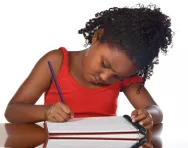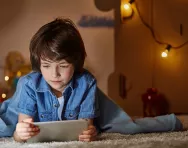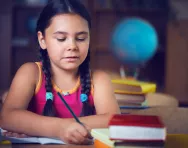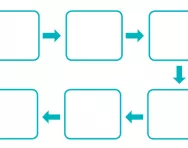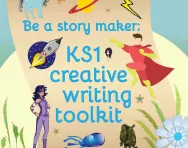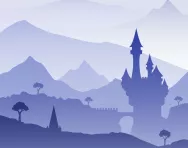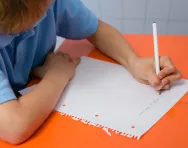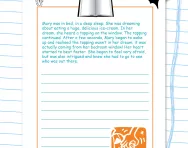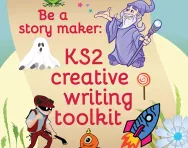Important update from TheSchoolRun
For the past 13 years, TheSchoolRun has been run by a small team of mums working from home, dedicated to providing quality educational resources to primary school parents. Unfortunately, rising supplier costs and falling revenue have made it impossible for us to continue operating, and we’ve had to make the difficult decision to close. The good news: We’ve arranged for another educational provider to take over many of our resources. These will be hosted on a new portal, where the content will be updated and expanded to support your child’s learning.
What this means for subscribers:
- Your subscription is still active, and for now, you can keep using the website as normal — just log in with your usual details to access all our articles and resources*.
- In a few months, all resources will move to the new portal. You’ll continue to have access there until your subscription ends. We’ll send you full details nearer the time.
- As a thank you for your support, we’ll also be sending you 16 primary school eBooks (worth £108.84) to download and keep.
A few changes to be aware of:
- The Learning Journey weekly email has ended, but your child’s plan will still be updated on your dashboard each Monday. Just log in to see the recommended worksheets.
- The 11+ weekly emails have now ended. We sent you all the remaining emails in the series at the end of March — please check your inbox (and spam folder) if you haven’t seen them. You can also follow the full programme here: 11+ Learning Journey.
If you have any questions, please contact us at [email protected]. Thank you for being part of our journey it’s been a privilege to support your family’s learning.
*If you need to reset your password, it will still work as usual. Please check your spam folder if the reset email doesn’t appear in your inbox.
What is creative writing?
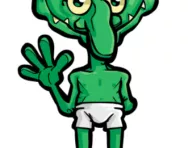
Narrative or creative writing will be developed throughout a child's time at primary school. This table gives a rough idea of how story structure, sentence structure, description and punctuation are developed through story-writing lessons at school. (Please note: expectations will vary from school to school. This table is intended as an approximate guide.)
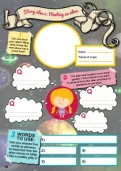
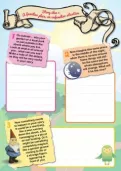
Download a FREE Creative Writing toolkit!
- KS1 & KS2 workbooks
- Bursting with fill-in prompt sheets and inspiring ideas
- Story structure tips, style guides and editing suggestions
Creative writing in primary school
Year 1
Story structure
Events in a story in an order that makes sense.
Sentence structure
Joining two clauses in a sentence with the word 'and.'
Description
Simple adjectives to describe people and places.
Punctuation
Use of capitals, full stops, exclamation marks and question marks.
Year 2 Story structure
Stories sequenced with time-related words such as: then, later, afterwards, next.
Sentence structure
Starting to use sentences with two clauses connected by 'and,' 'but,' 'so,' 'when,' 'if' and 'then.' Keeping the tense of the writing consistent.
Description
Using a broader range of adjectives.
Punctuation
Using capital letters, full stops, question marks, exclamation marks, commas for lists and apostrophes for contracted forms (e.g. they're) and the possessive (e.g. 'Sarah's pen').
Year 3 Story structure
Stories structured with a clear beginning, middle and end. Starting to write in paragraphs.
Sentence structure
Continuing to use sentences with two parts, linked with connectives such as 'because', 'but' and 'so'.
Description
Broad range of adjectives plus some powerful verbs.
Punctuation
Using all of the punctuation above. Starting to use some speech punctuation.
Year 4
Story structure
Gaining confidence with structuring a story and with organising paragraphs.
Sentence structure
Using sentences connected with more sophisticated connectives such as because,' 'however,' 'meanwhile' and 'although.'
Description
Using a range of adjectives, powerful verbs and adverbs. Some use of similes. Using fronted adverbials (placing the adverb at the start of the sentence, e.g. 'Quickly, the children stood up').
Punctuation
Increasingly accurate use of speech punctuation. Using commas after fronted adverbials.
Year 5
Story structure
Good structure of description of settings, characters and atmosphere. Integrating dialogue to advance the action. Using time connectives to help the piece of writing to come together.
Sentence structure
Using a range of connectives to connect parts of sentences.
Description
Using adjectives, powerful verbs and adverbs. Possibly some use of figurative language such as metaphors, similes and personification.
Punctuation
Using brackets, dashes or commas to indicate parenthesis.
Year 6
Story structure
Continuing to structure stories confidently. Using adverbials such as: in contrast, on the other hand, as a consequence.
Sentence structure
Using more sophisticated connectives like 'although,' 'meanwhile' and 'therefore.' Using the passive form. Using the subjunctive.
Description
Continuing to use a range of descriptive language (see above) confidently.
Punctuation
Using all of the previously mentioned punctuation correctly. Using semi-colons, colons and dashes to mark the boundary between clauses.
How creative writing is taught in primary schools
When teachers teach creative writing, they usually follow the units suggested by the literacy framework, including the following:
- stories with familiar settings
- stories from other cultures
- fairy tales (also known as traditional tales)
- fantasy stories
- myths and legends
- adventure and mystery
- stories with historical settings.
Teachers will start with a text that they are confident will engage the interest of the class. It is often a good idea to find a well-illustrated text to bring the story alive further. They will spend a week or two 'loitering on the text', which will involve tasks where characters and scenarios from the text are explored in-depth. These tasks may include:
- Drawing a story map or mountain to get an idea of the structure of the story
- Writing a letter from one character to another
- In pairs, improvising a conversation between two characters in the story
- Making notes on a spider diagram about a particular character
- Writing the thoughts of a character at a particular point in the story
- Writing a diary entry as one character in the story
Once teachers feel that the text has been thoroughly explored, they will guide the children in writing their own version of the story. This involves planning the story, brainstorming characters and setting and then writing a draft of the story. Children will then be encouraged to edit and re-write their draft. Teachers may mark the draft and write their own suggestions on it, or they may ask children to swap their writing with their partner and encourage them to make suggestions on each other's work. Throughout this process, teachers are aiming to encourage children to develop skills in the above four sections of the table: story structure, sentence structure, description and punctuation.
Finally, children will write up a 'neat' finished version of their writing. Teachers often give children a format for doing this, such as bordered paper on which they can add illustrations, or a booklet for which they can design a front cover.

